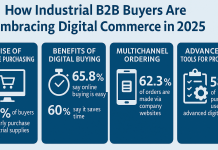Brazil demonstrates how a smartphone may increase financial inclusion and provide underprivileged individuals with access to bank accounts.
According to Mario Shiliashki, CEO of PayU Global Payments, bringing financial services to underserved populations and assisting them in moving beyond cash-based transactions will require extensive, collaborative efforts between traditional and nontraditional financial services players and regulators.
Financial inclusion calls for more than simply technology for the 1.7 billion unbanked and underbanked individuals and 200 million unbanked and underbanked small enterprises.
Regulators must adjust their approaches a little and broaden the frameworks that control data collection and usage for that ecosystem to emerge. He clarified that other companies are also developing new goods and services to fulfill consumer demand, not simply FinTechs.
“Banks are attempting to work with FinTechs to deliver better services,” he added, not merely play catch-up.
According to him, these coordinated efforts make it simpler for businesses and individuals to accept new accounts that are backed but not necessarily “managed” by banks. Then, the transaction accounts serve as a launchpad for fresh experiences and offerings.
Bankless to mobile banking transition
He cited a number of instances when banks, FinTechs, and regulators worked together to advance financial inclusion. Brazil has witnessed development for PayU, which offers cross-border commerce and payment functions through a single connection. And in that market, 70% of Brazilians currently utilize Pix, the quick payment system the Brazilian Central Bank introduced in 2020, in billions of transactions.
In what had been a “under-carded market,” he added, “the adoption has been amazing because adoption has been encouraged by the government, by established institutions,” and by FinTechs.












